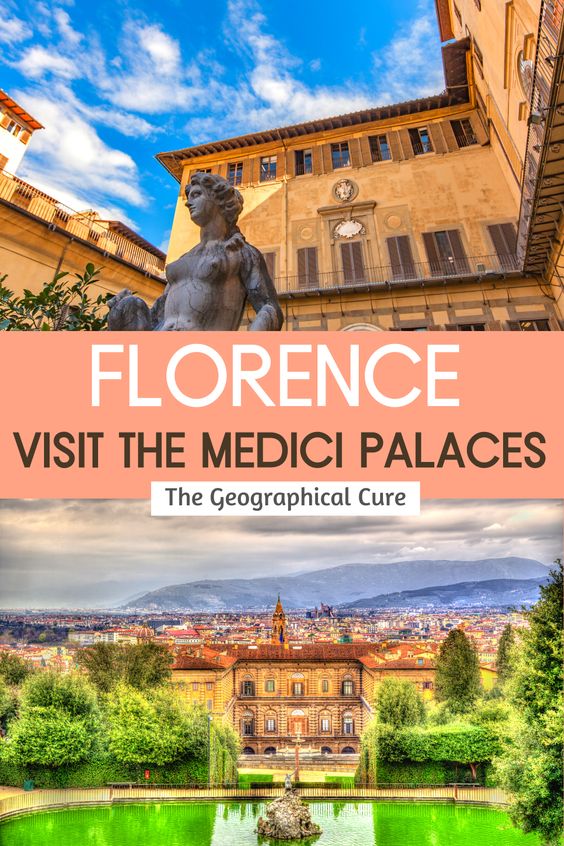The Medici were the most celebrated family of the Renaissance era. Florence is synonymous with the Medici and the Medici is synonymous with Florence.
Everything the Medici owned, created, and commissioned is gorgeous, including the palaces they lived in.
There are three to visit:
- Medici-Ricardi Palace
- Palazzo Vecchio
- Pitti Palace
This guide will give you a rundown of everything to see.
The palaces are somewhat craggy and rusticated on the outside, as was the fashion of the day. But inside, they hold some of the Italy’s best art, including opulent Renaissance paintings, frescos, and sculptures.
Who Were The Medici?
So who were the Medici? The Medici ruled Florence for nearly 300 years. They were bankers, politicians, and art patrons. Some of the Medici became cardinals and popes.
The first real Medici power broker was Cosimo the Elder. He was both an avid art patron and a Machiavelli-like politician.
Cosimo sponsored early Renaissance artists and architects like Michelozzo, Donatello, and Ghiberti. Over 37 years, Cosimo created a dynasty that would endure for centuries and produce four popes.
Perhaps the most powerful and influential Medici was Cosimo’s grandson, Lorenzo. Lorenzo nicknamed himself “Il Magnifico,” or the Magnificent.
Lorenzo was a true Renaissance man — savvy politician, connoisseur of arts, music composer, and even a romantic poet. His second son became Pope Leo X.
In 1537, Cosimo I came to power, becoming the first Grand Duke of Tuscany in 1569. Today, Cosimo I is best known for building and/or renovating and expanding the Uffizi Gallery, the Vasari Corridor, the Monastery of San Marco, and the Pitti Palace.
The descendants of Cosimo I ruled into the 18th century in relative stability. But then decay set in. This generation of grand dukes ruled by force, and reduced Florence’s reputation as a cultural capitol.
The last Medici died in 1743. She bequeathed all of the Medici treasures to Florence on the condition that they never be sold. As a result, Florence is a rare bastion of in situ art.
Medici-Related Tours In Florence
I am definitely not the only one obsessed with the Medici.
There are plenty of Medici themed tours you can go on when you’re visiting Florence.
For example, you can book:
- a Medici mysteries walking tour
- a Medici family walking tour
- a footsteps of the Medici tour
- a 2 hour tour of Medici series filming locations
- a 2.5 hour evening walking tour about the Medici
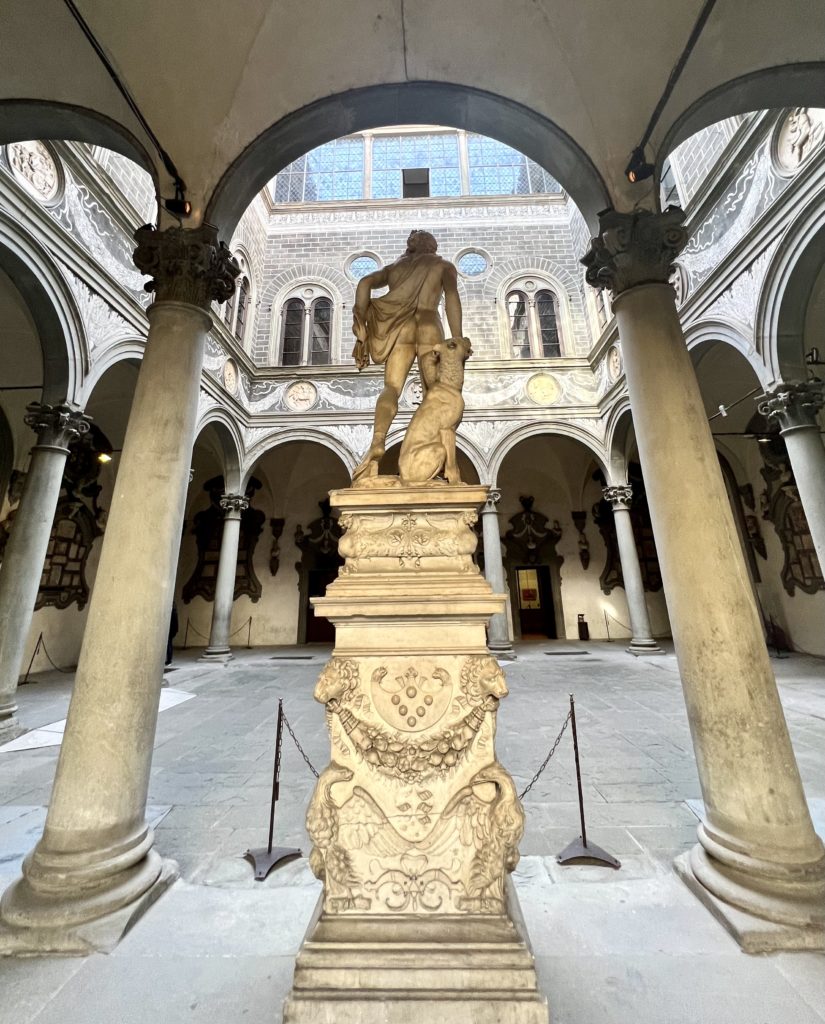
Guide To The Medici Palaces: What To See
1. Palazzo Medici-Riccardi
The ancient and austere Palazzo Medici is the Renaissance home where it all began. The palace is the very symbol of he Renaissance.
Two of the greatest historical figures of the Renaissance lived in the palace — Cosimo the Elder and Lorenzo the Magnificent. This makes it sort of a sentimental favorite of mine.
The fortress-like palace was home to the Medici family in the second half of the 15th century and a couple of decades of the 16th century.
The palace architect was Michelozzo, whom Cosimo the Elder commissioned in 1444. The Medici-Riccardi Palace is considered the first Renaissance style family palace — at least based on the interior.
One might have expected the more famous Fillipo Brunelleschi to be chosen as the primary architect for the Medici’s home. After all, he was the architect of the Duomo and of the Medici family church, San Lorenzo.
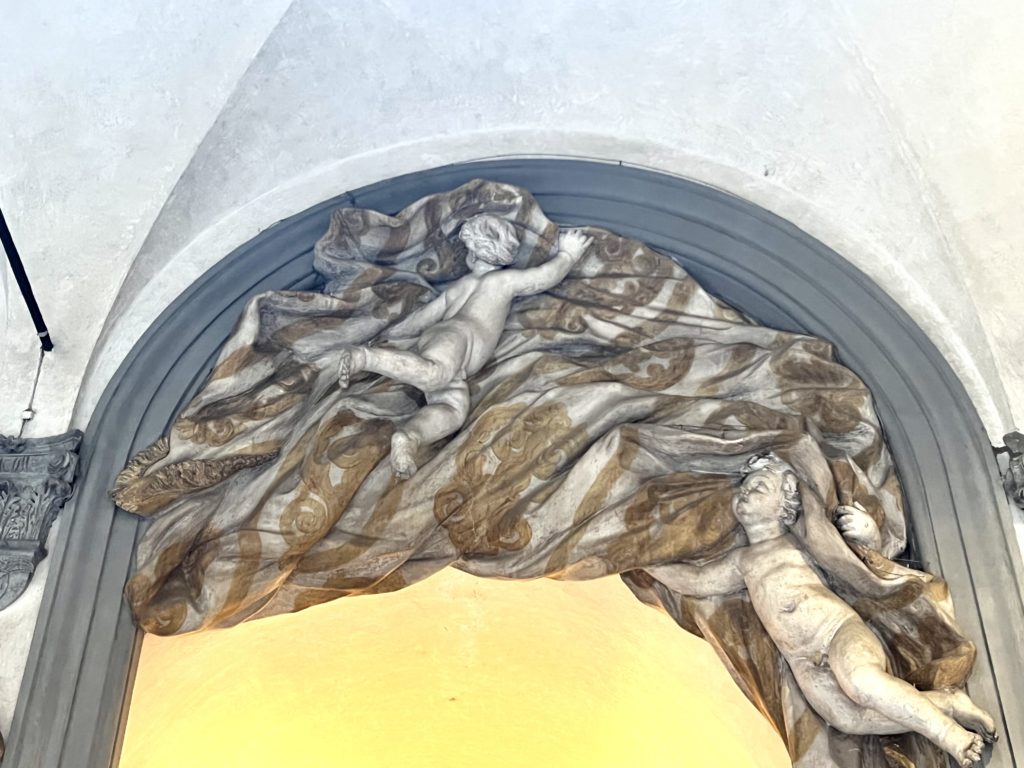
And he was initially. Brunelleschi created a fine and detailed model of his proposed Medici palace.
But Brunelleschi’s vision for the palace was luxurious and decadent. A discreet Cosimo the Elder decided it would send the wrong message — “I’m a king” — to the regular citizens of Florence.
Angered by Cosimo’s change of heart, Brunelleschi smashed the model into smithereens in a fit of artistic temperament. Cosimo subsequently came to regret his decision.
The building itself is a rectangular in plan. It was built with the typical (and rather drab) rusticated Florentine brownstone, pietra forte. The palace is three stories, each of which diminishes in height and gets more refined as the building rises.
The arches on the ground floor were originally open, providing a loggia of sorts. They were later covered up by Michelangelo. A stone bench is built into the exterior.
Inside, you can visit the courtyard, a small exhibition space, some rooms upstairs, and best of all, a little jewel of a chapel. You first step into the courtyard.
The classically-inspired courtyard is square, surrounded on all four sides by gray pietra serena Corinthian columns.
The somewhat stumpy columns support semi-circular arches, which in turn support an entablature (or horizontal) strips. The Medici coat of arms is shown on the friezes.
Donatello’s avant garde Bronze David and Judith and Holofernes statues once stood in the courtyard, before moving to the Palazzo Vecchio.
Today, you see a statue of Orpheus by lMannerist sculptor Baccio Bandinelli commissioned by Giovani de Medici, the future Pope Leo X. The decorative stone framing and stone statuary on the walls were later additions in the Baroque period.
The ground floor of the palace was used by the public. The first floor, the piano nobile or principal floor of a palace, was where the family resided.
The top floor was where the kitchen and servants quarters were located, best to keep the steamy stench away from palace visitors.
The Galleria Ricardania, or Hall of Mirrors, is an over the top Baroque confection with gold walls. This room was a Riccardi addition in the 17th century.
The illusionistic ceiling frescos were painted by Luca Giordano, with scenes from mythology. Allegorical virtues are in the corners. In the middle in the is the Apotheosis of the Medici.
The whole scene is set on a beautiful aquamarine background. Giordano’s style is fresh and lively.
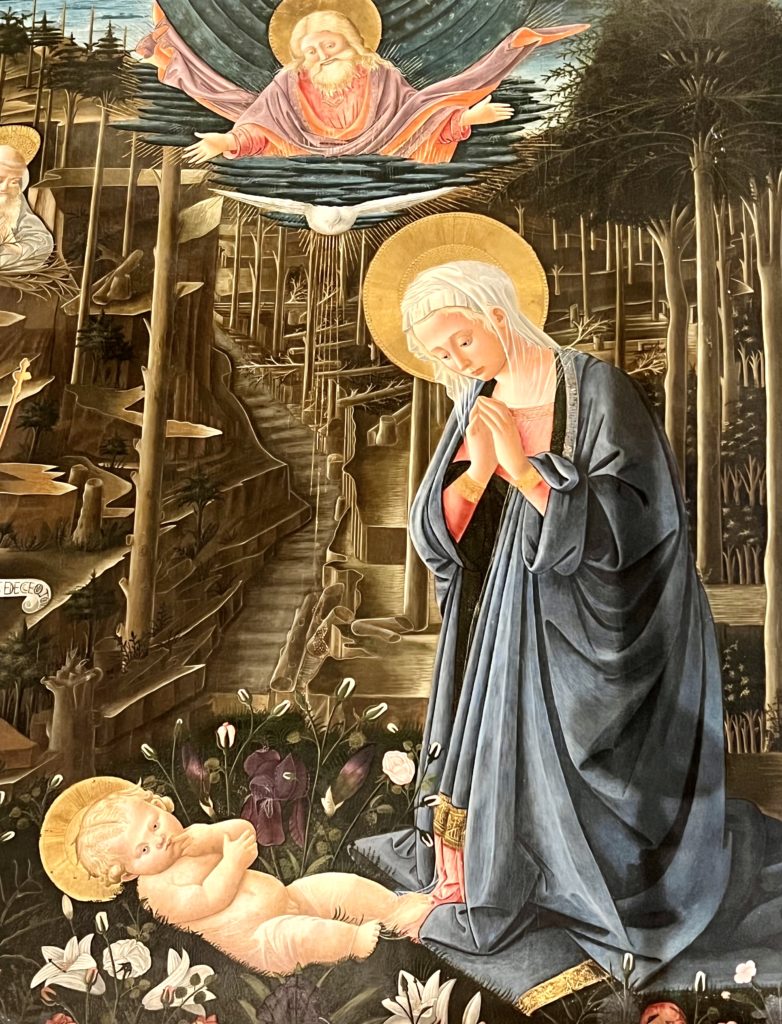
Though the palace itself is rather a brooding rusticated stone affair, the Piano Nobile hides one of Florence’s most precious hidden gems — the Chapel of the Magi. The chapel is accessed via a stairway from the courtyard.
The Chapel of the Magi was a private chapel in the Medici home used exclusively for prayer and devotion. Private chapels were a rarity in the 15th century, though later popularized by the nobility.
They required a special papal dispensation to build. Since the pope was the Medici’s main banking client, this was easy to obtain.
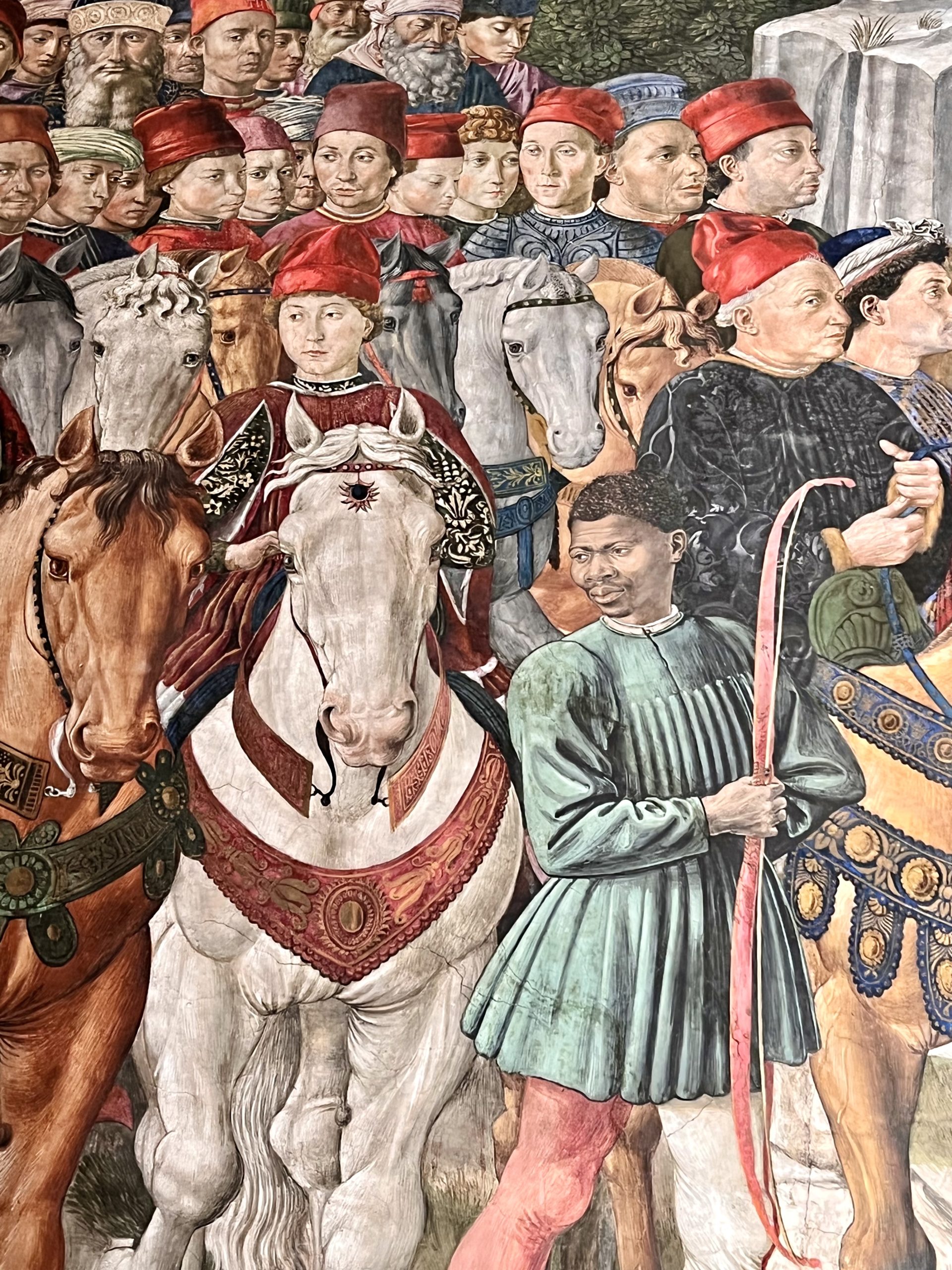
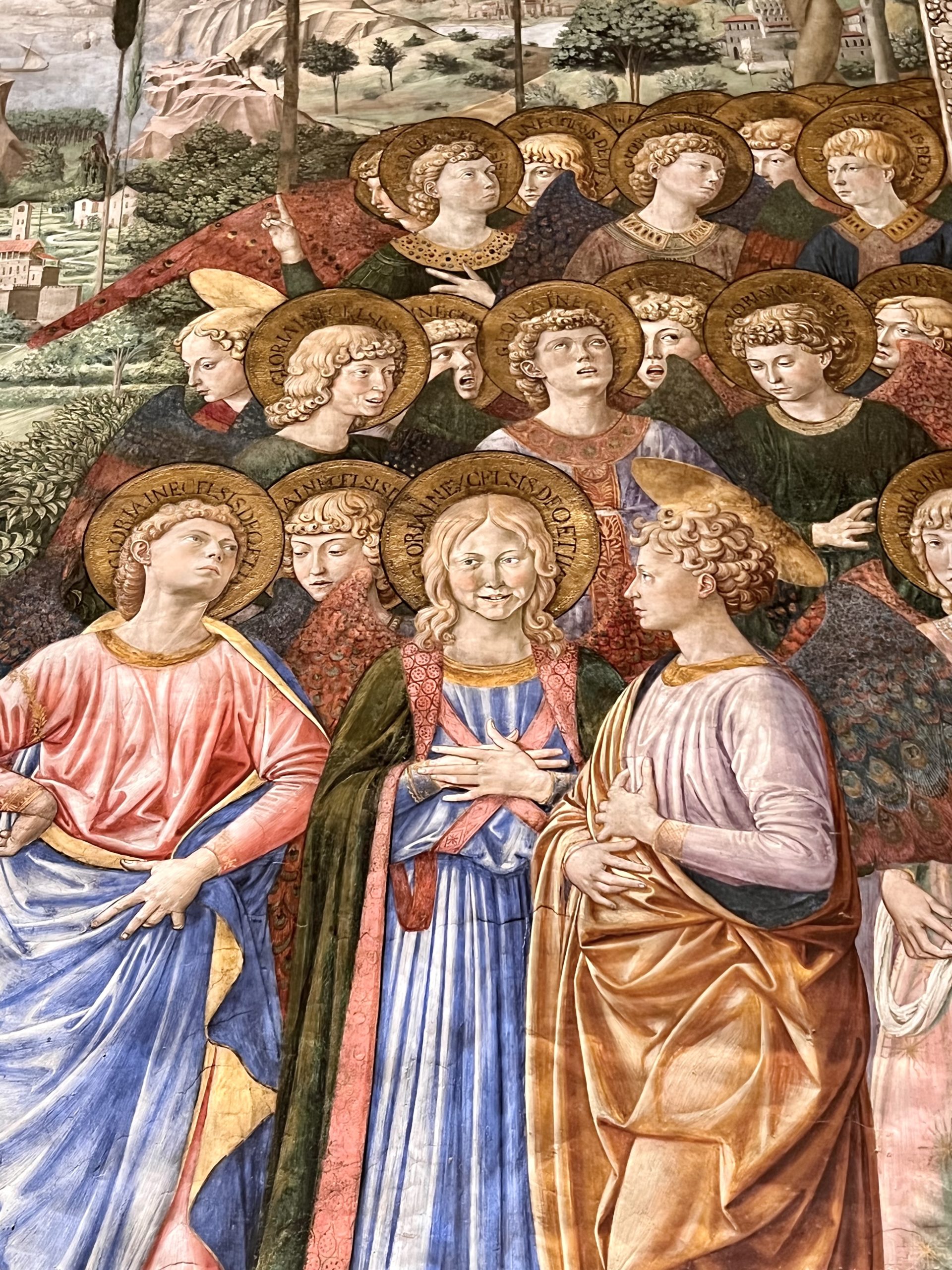
The Magi Chapel is decorated with a beautiful series of frescos painted in 1459 by Benozzo Gozzoli. Gozzoli was trained by Ghiberti and Fra Angelico, and thus rendered the frescos in a charming narrative style.
The frescos are in two parts, the Procession of the Magi is on three walls in the main room. The Adoration of the Magi in the chancel/altar.
The frescos are meant to glorify the Medici family. It was a form of propaganda to show their wealth and greatness. Throughout the chapel, there’s an abundance of purple porphyry and gold, just to underscore the point.
The main event is the Procession of the Magi. It covers three of the four chapel walls.
READ: Guide To the Most Beautiful Chapels in Italy
Each wall depicts one of the three kings or magi arriving in Bethlehem to pay homage to the newborn king, bringing expensive gifts. The reading of the frescos starts on the right hand side.
The most famous Medici appear in the frescos in the guise of the magi, equating the Medici with the divine. Immortality is often what mortals seek, in hopes of redemption, particularly wealthy bankers charging usurious interest to make a luxe living.
On the east wall, there’s a portrait of Lorenzo the Magnificent at the age of 10 on a white horse. There’s also a portrait of Giuliano, Lorenzo’s brother who was assassinated in the Pazzi Conspiracy (more on that below).
Cosimo the Elder appears riding a donkey, a reference to Jesus himself. Is Cosimo trying to appear modest or does he consider himself the second coming? It’s unclear.
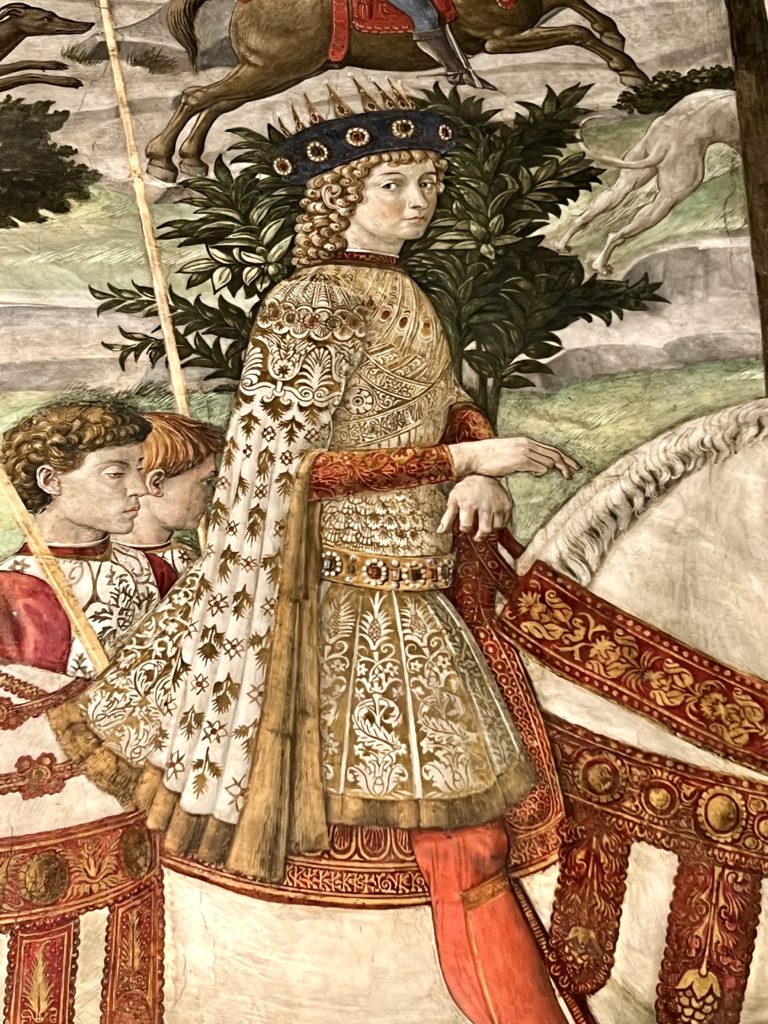
The ceiling is decorated with a diamond pointed ring bearing the motto semper. The word semper also appears on the frescos.
Semper seems to imply the Medici dynasty is “forever” or “always.” The Medici used this term in private, but disdained using it in public to avoid antagonizing the citizenry.
Don’t forget to head downstairs to visit the Museum of Marbles. A ramp leas you down to the basement. Visitors can trace the entire history of the palace, from the Roman age to the renovations made in the 19th and 20th centuries.
The museum contains contains a wonderful selection of sculptures and busts from the Riccardi family’s antiquarian collection. The Riccardi were passionate collectors of antique marbles from the Roman age.
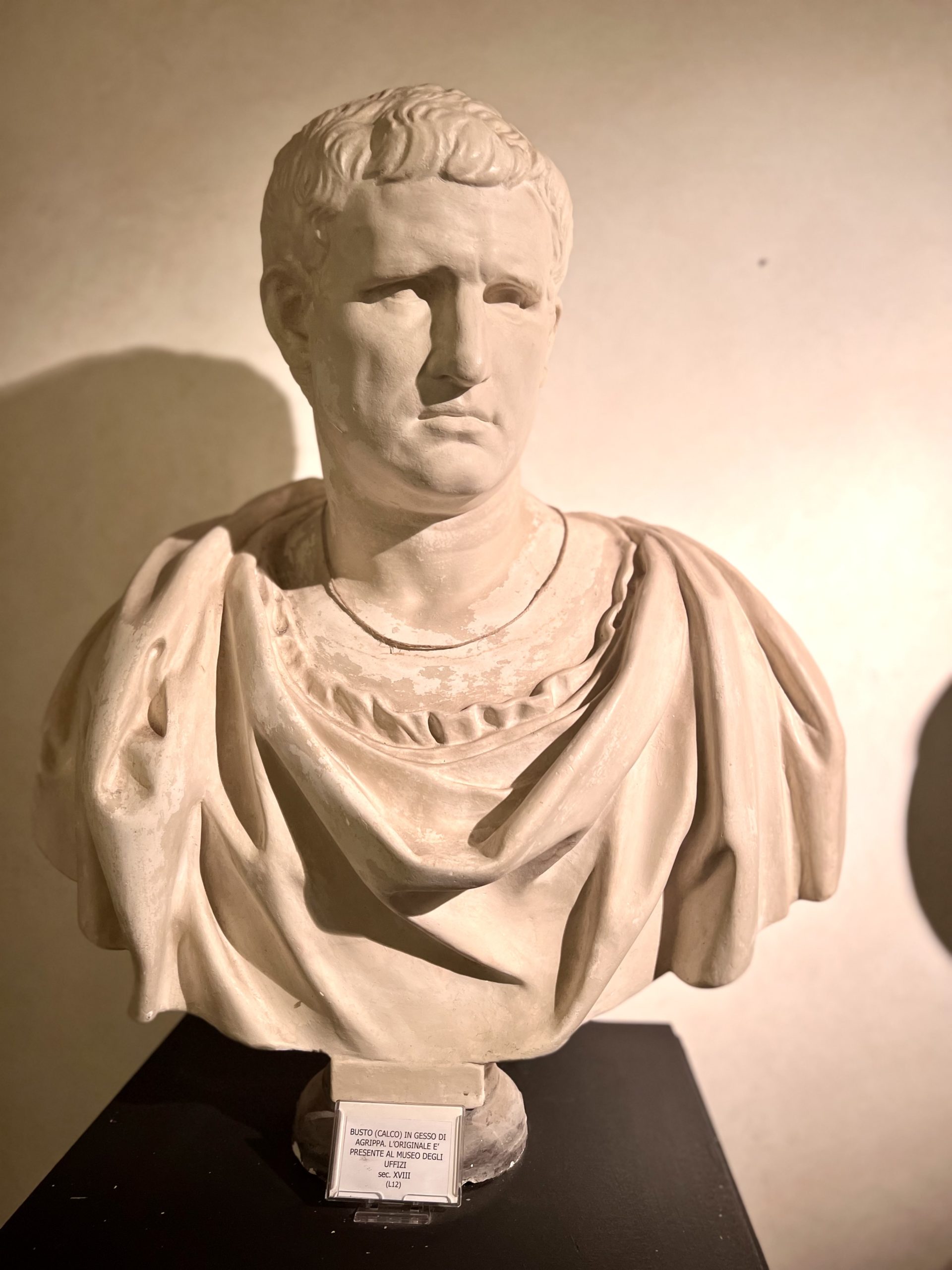
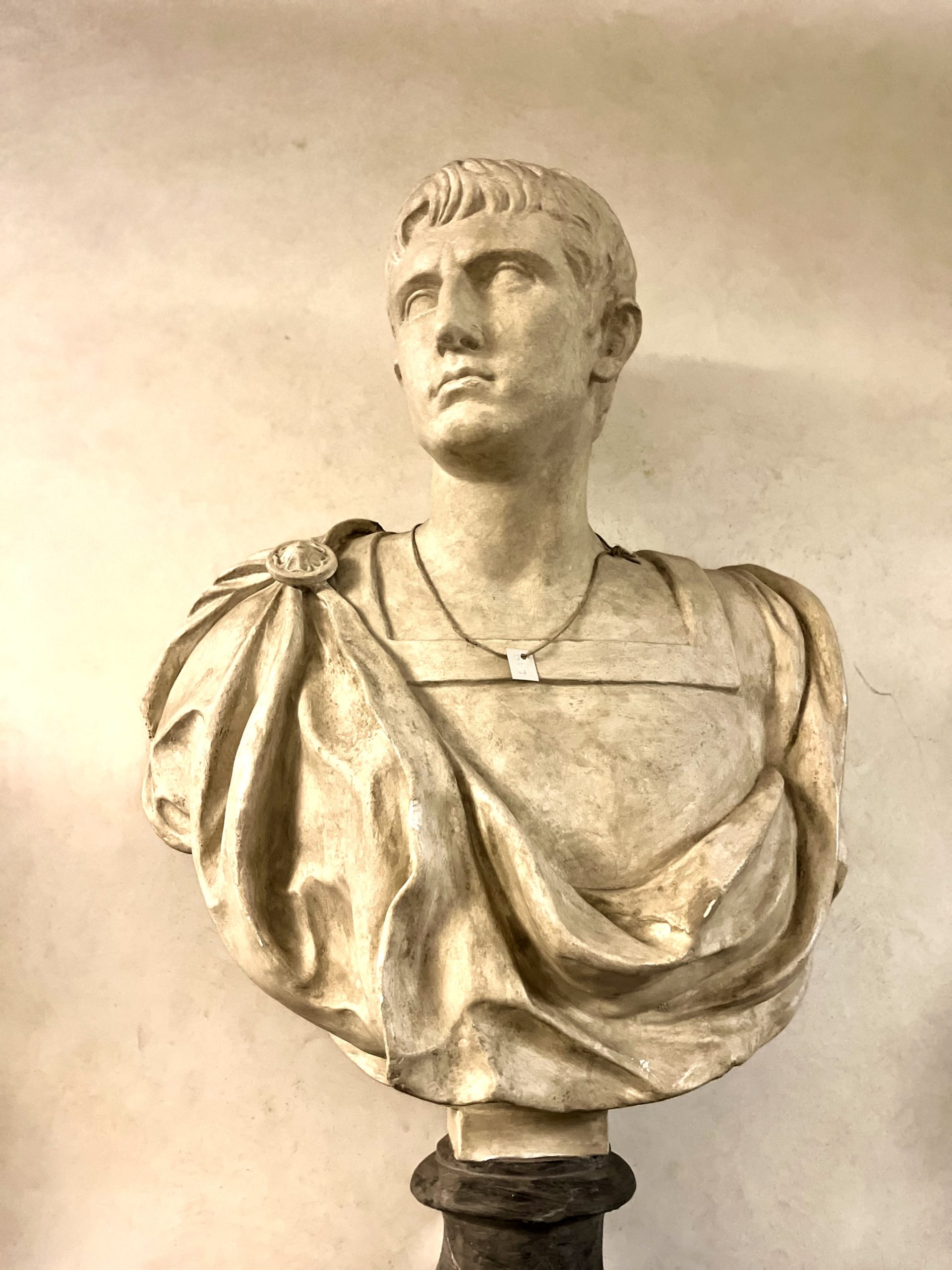
You’ll find busts of most of the era’s most famous figures, including Greek philosophers and the Roman Emperors.
When you’re done admiring the interior, step outside into the palace’s walled garden. It’s a lovely green space also filled with antiquities.
The garden is dominated by orange trees, the orange being a Medici family symbol.
The garden originally hosted a groundbreaking Donatello sculpture, Judith and Holofernes. The original sculpture is now in the Hall of Lilies of the Palazzo Vecchio and a copy sits in the Piazza della Signoria.
2. Palazzo Vecchio
In 1540, Cosimo I moved his family from the Medici Palace into the Palazzo della Signorina, now called the Palazzo Vecchio. This rather homely medieval fortress dates from the 13th century.
It was constructed by Arnolfo di Cambio, architect of Florence Cathedral and the Basilica of Santa Croce. The Palazzo Vecchio still houses the Florence City Hall.
But today the Palazzo Vecchio is mostly a museum. It sits in the famous Piazza della Signoria, the center of Florentine life and politics, a meeting spot buzzing with activity.
Many beautiful sculptures by Italy’s greatest artists are on display in front of the Palazzo Vecchio or adjacent to it in the Loggia dei Lanza, including a copy of Michelangelo’s David (at the entrance) and Benvenuto Cellini’s famed Perseus.
You first step into the charming courtyard, designed by the famed architect Michelozzo in 1453. The courtyard has intricately carved and gilded columns, beautiful grotesque style ceiling frescos, and sculptures.
In the center, an iron putti tops a fountain by artist Battista del Tadda. The putti and his dolphin are a copy of the original by Andrea del Verrocchio, which was moved inside the palace.
The courtyard has intricately carved and gilded columns, beautiful grotesque style ceiling frescos, and sculptures. The frescos are by Giorgio Vasari, though they’re not very well preserved. Vasari was a famed Florentine artist, architect and the world’s first art historian.
On the first floor of Palazzo Vecchio, you can visit the Hall of the Five Hundred, awash with more frescos by Vasari
READ: Battle of the Battle Frescos in Palazzo Vecchio
In particular, he painted massive frescos depicting the The Battle of Marciano, in which Florence triumphed over rivals Pisa and Siena. Vasari also painted the 39 gilded ceiling panels, telling the life story of Cosimo I.
Another masterpiece of the Hall of Five Hundred is Michelangelo’s Genio della Vittoria, or Genius of Victory, sculpture.
It was carved for the Tomb of Pope Julius II, another project that didn’t come to fruition. It was found in Michelangelo’s house when he died and donated to the Medici family.
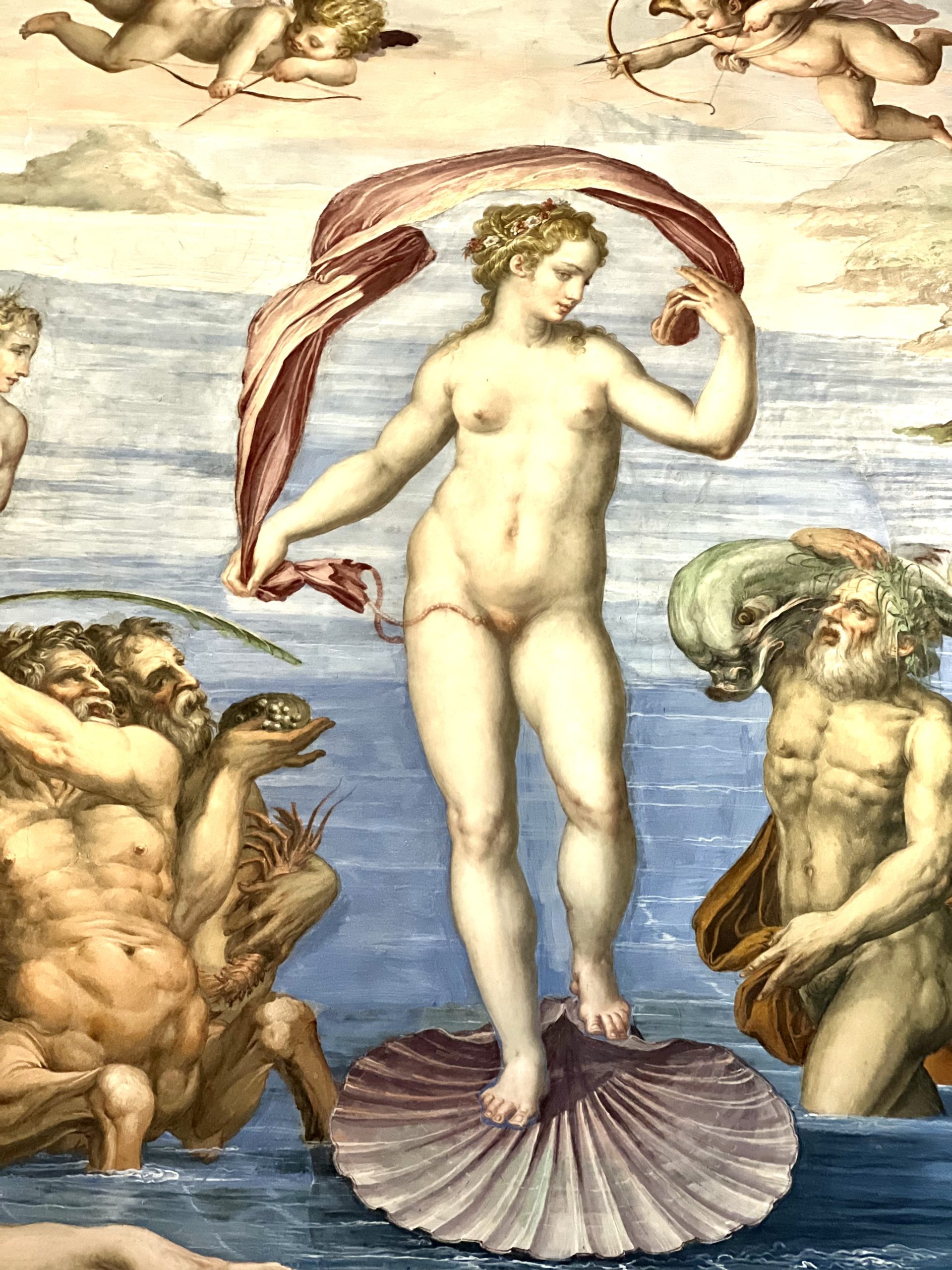
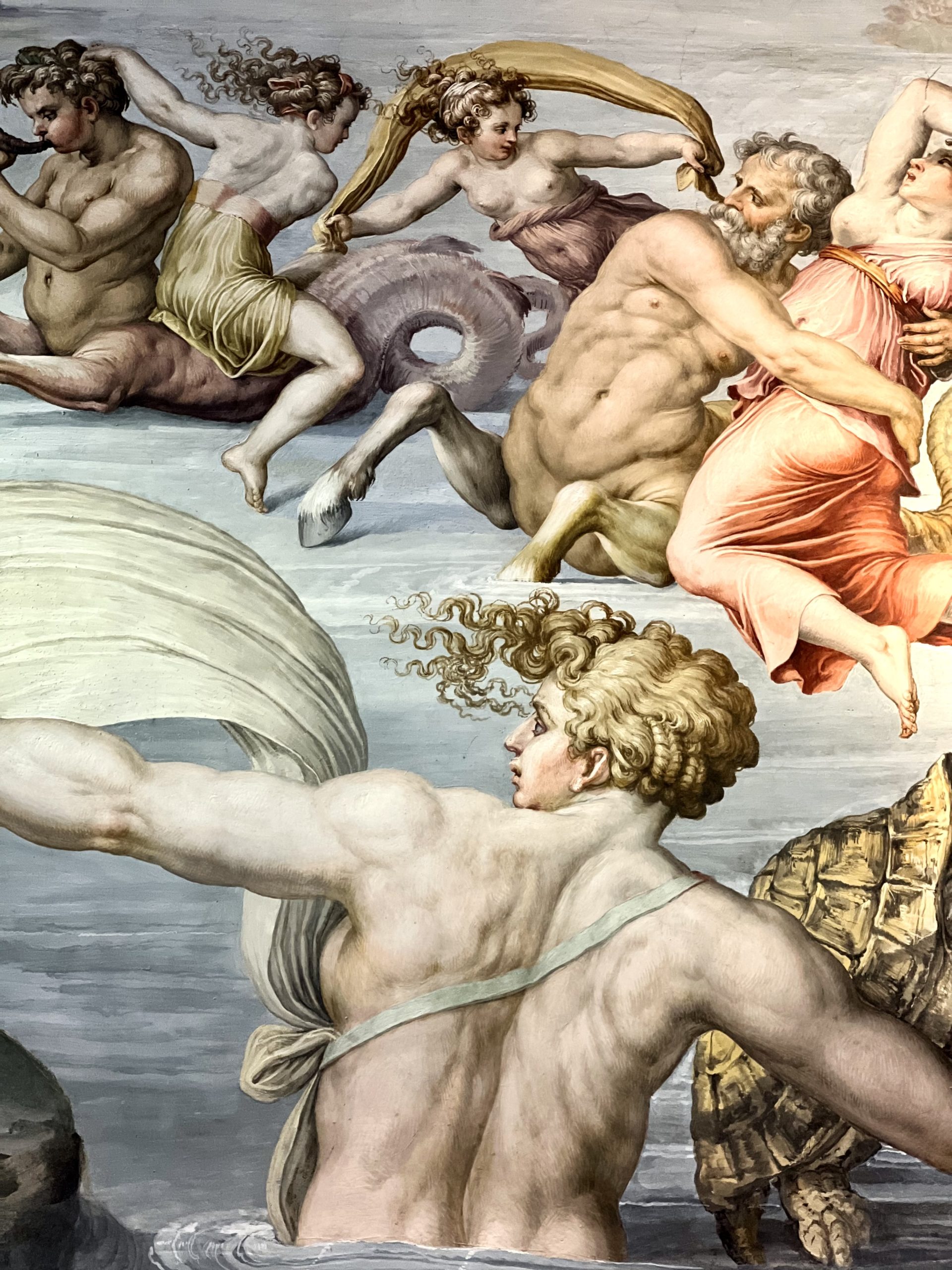
On the second floor are the sumptuously decorated private rooms of the Medici, including the Apartments of Pope Leo X.
A real highlight are the five rooms and two loggias of the Apartment of the Elements. These were the private rooms of Cosimo I.
They are just stunning. Their allegorical frescos were recently restored, and glow with themes from ancient mythology and astrology.
The Hall of Lilies is a stunning example of early Renaissance interior decoration. It’s spectacularly decorated with gilded coffered ceilings with gold on blue fleur de lis, the symbol of Florence.
This is where you can admire Donatello’s groundbreaking Judith and Holofernes sculpture.
The Palazzo Vecchio was famously the scene of one of Renaissance Florence’s most brutal tales.
In 1478, the Pazzi family tried, but failed, to oust the ruling Medici family in a coup. They plotted to kill both Lorenzo the Magnificent (Cosimo’s grandson) and his brother Giuliano.
Lorenzo escaped and exacted a brutal revenge. In just a few hours, the killers and conspirators (including the pope’s nephew) were captured.
They were hung from the second floor ramparts of the Palazzo Vecchio. Incensed by the brutal violence, the pope excommunicated Lorenzo.
Palazzo Vecchio is also linked to another key moment in Florence’s history, the rise of the fiery Dominican preacher Girolamo Savonarola.
In passionate sermons, Savonarola denounced the excesses of clerical and despotic power. He told Florentines the apocalypse was coming and to save themselves through piety and self censorship.
The doomsday preacher eventually ousted the Medici and established a theocracy in Florence. But Savonarola went too far.
In the 1497 “Bonfire of the Vanities,” he destroyed works of art and other “vanities” in the Piazza della Signoria. But the pleasure loving citizens of Florence had enough and didn’t want their cultural legacy destroyed.
In 1498, Savonarola was defrocked and imprisoned in the Palazzo Vecchio for heresy. After being tried and convicted, he was executed in the Piazza della Signoria. A circular plaque near the Palazzo Vecchio’s entrance marks the spot of Savonarola’s execution.
If you’re up for a climb of 400 steps, the Tower of Arnolfo offers 360 views of Florence. You enter via the Museum of Palazzo Vecchio, with a combined ticket for Palazzo Vecchio or for an additional small fee.
For more details, here’s my complete guide to visiting the Palazzo Vecchio.
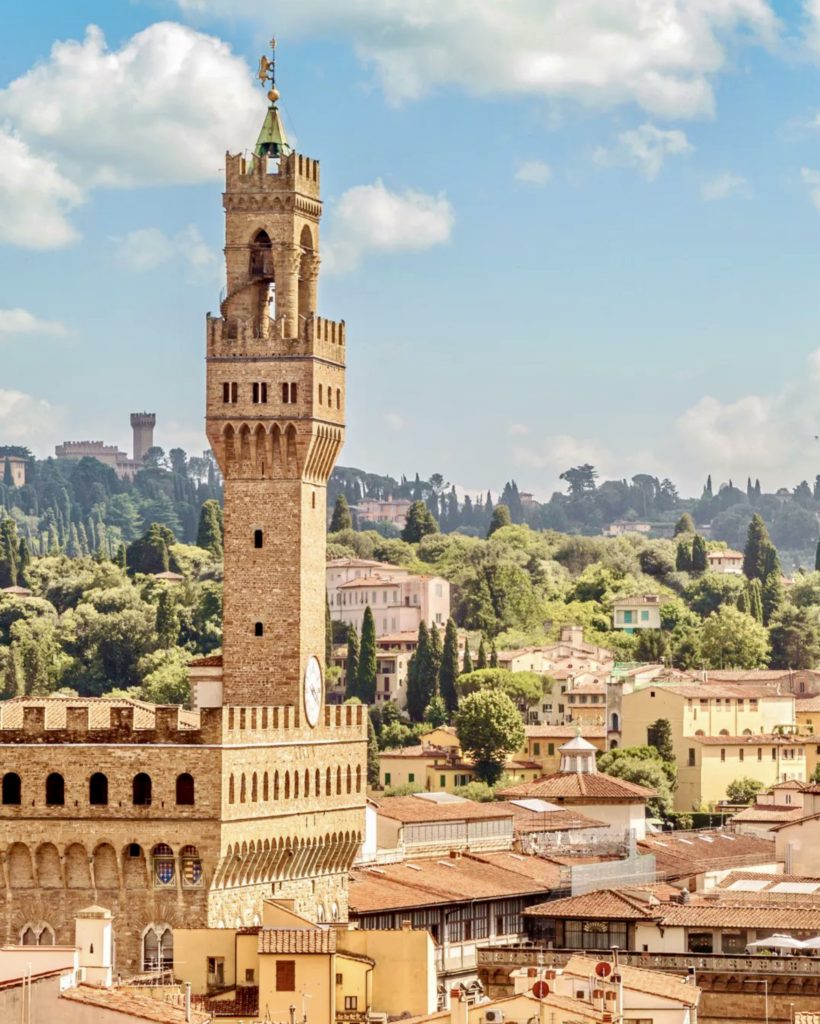
Tickets & Tours Of The Palazzo Vecchio
If you’re visiting Florence in high season, I would definitely pre-purchase a ticket for the Palazzo Vechio. Click here to book a skip the line ticket with a time slot reservation.
You can also book a guided tour of the palace. There is a guided secret passages tour with lunch. This guided 2 hour tour covers the palace and the Piazza della Signoria.
Another popular 2 hour guided tour includes the palace and a climb of the Tower of Arnolfo. You can also book a private guided tour.
3. Pitti Palace | Palazzo Pitti
The magnificent Palazzo Pitti is located across the Arno River, in the off the beaten path Oltrarno district that’s now Florence’s trendiest neighborhood.
The palace is one of Florence’s most stunning architecture gems. Built in 1457, it was designed by Brunelleschi and built for the Florentine banker Luca Pitti, a Medici rival.
When Cosimo the Elder built the Medici Palace, Pitti decided to trump his nemesis. In 1458, he began building a grand palace across the River Arno.
But the project bankrupted Pitti and he died before it was completed. The Pitti Palace was the model for the Residenz palace in Munich Germany.
By the middle of the 16th century, the Medici had become European royalty. Cosimo I’s wife, Eleanor of Toledo, wasn’t terribly impressed with her digs at the Palazzo Vecchio. She wanted a grander place to raise her royal family.
In 1459, she purchased the Pitti Palace rom the bankrupt Pittis. Eleanora embarked on a grand expansion. Architect Bartolemeo Ammannati added the fancy courtyard and lateral wings, tripling the size of the palace to 140 rooms and adding 8 art galleries.
Each room is named for the theme of its paintings. The Pitti Palace became the new symbol of Medici power.
Today, the Palazzo Pitti houses the following permanent collections:
- Galleria Palatina: the Medici’s painting collection with works by Titian, Giorgione, Raffael, and Rubens
- Galleria d’Arte Moderna: with works from Classicism to Italian Futurism
- Costume Gallery: the costume and fashion gallery
- Museo delle Porcellane: the porcelain museum
- Museo degli Argenti: the treasury of the grand dukes
- Appartamenti Reali: the royal apartments
- Museo delle Carrozze: the carriage museum
The most important museum, bar far, is the Palatine Gallery. It occupies the left wing of the first floor.
The gallery houses an impressive collection of over 500 in situ paintings, chock a block on top of each other amid lavish stucco and silk furnishings. In the five Planet Rooms, there are beautiful ceiling frescos by Pietro da Cortona.
The collections include works by Raphael, Titian, Rubens, Caravaggio, and other European and Italian painters.
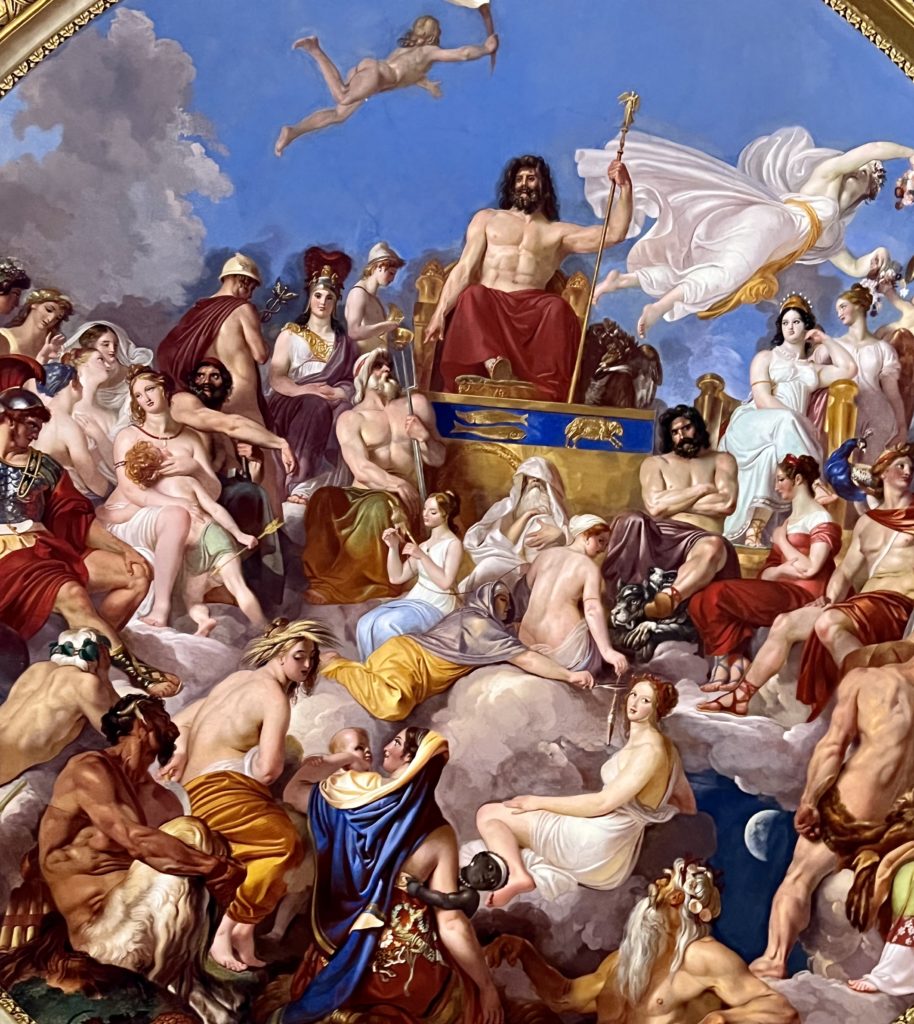
Be sure to check out Botticelli’s and Lippi’s Madonna and Child in the Prometheus Room.
Two versions of Andrea del Sarto’s massive Assumption of the Virgin are in the Iliad Room. And one of my favorite artists, Artemisia Gentileschi, has another version of Judith and Holofernes in the Saturn Room.
The Royal Apartments showcase styles from three different eras of ownership.
You’ll find 14 rooms with Baroque frescoed ceilings, gilded inlaid work, Rococo stucco, and red damask decorations. Definitely not to my taste, too over the top ostentatious.
The historic Boboli Gardens is the backyard playground of the Pitti Palace. Designed for Eleanora, the gardens are the largest green space in Florence, sprawling over 11 acres.
The gardens are effectively an open air museum, with hundreds of nooks to explore. They opened to the public in 1776.
The gardens are laid out in the Italian style, with beautifully worn Renaissance statues and fountains. The Rococo Kaffeehaus is on the eastern edge of the gardens, and its terrace is the perfect viewing point.
Its German name odd for a pavilion in an Italian garden. But it was commissioned by the palace’s then-owner, Grand Duke Peter Leopold of Habsburg-Lorraine, who later became Emperor Leopold II of the Austro-Hungarian Empire.
The famous Fountain dell’Oceano and the Bathing Venus were sculpted by the underrated artist Giambologna, whose statues grace the Bargello Museum and the Piazza della Signoria. After Michelangelo, Giambologna was the next best sculptor of the time.
The Grotto Grande, also known as the Buontalenti Grotto’s, is a fascinating place. In 16th century Tuscany, it was the fashion to build decorative grottos reconstructing natural caves.
The grotto once had a fresco by Michelangelo (now in the Accademia) and has copies of his four slaves.
READ: Guide To Michelangelo’s Sistine Chapel
An interesting sculpture is the modern Cracked Face Statue, Tindaro Screpollato, by Igor Mitoraj.
The bronze face is huge, with green streaks running through the cracks that look like tears. The crumbling visage symbolizes both human fragility and strength.
In Renaissance times, the Boboli Gardens was the sole province of the Medici. Now, other citizens are granted access.
You can enjoy the greenery, rose, and peonies, while having a great view of the Duomo.
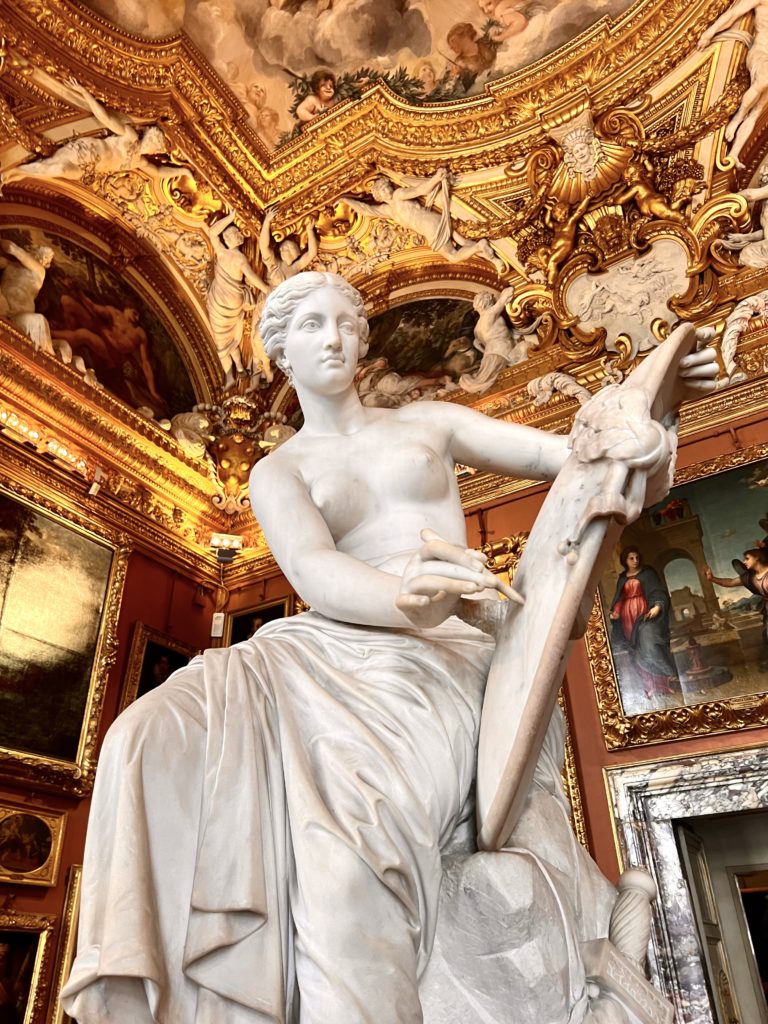
Tickets & Tours For The Pitti Palace
You should definitely book a skip the line ticket if you’re visiting in high season. Click here to pre-book a ticket to the Pitti Palace.
Click here to book a guided tour of the magnificent museum. There’s no signage, so a tour would be helpful.
You can book a combined tour of the Pitti Palace, Uffizi Gallery and the Academia to see Florence’s best museums. There’s also a combined ticket and guided tour to the palace, the Palatine gallery, and the Boboli Gardens.
The palace gardens are gorgeous, but you have to book a separate ticket for them. Click here to pre-book a skip the line ticket to the Boboli Gardens.
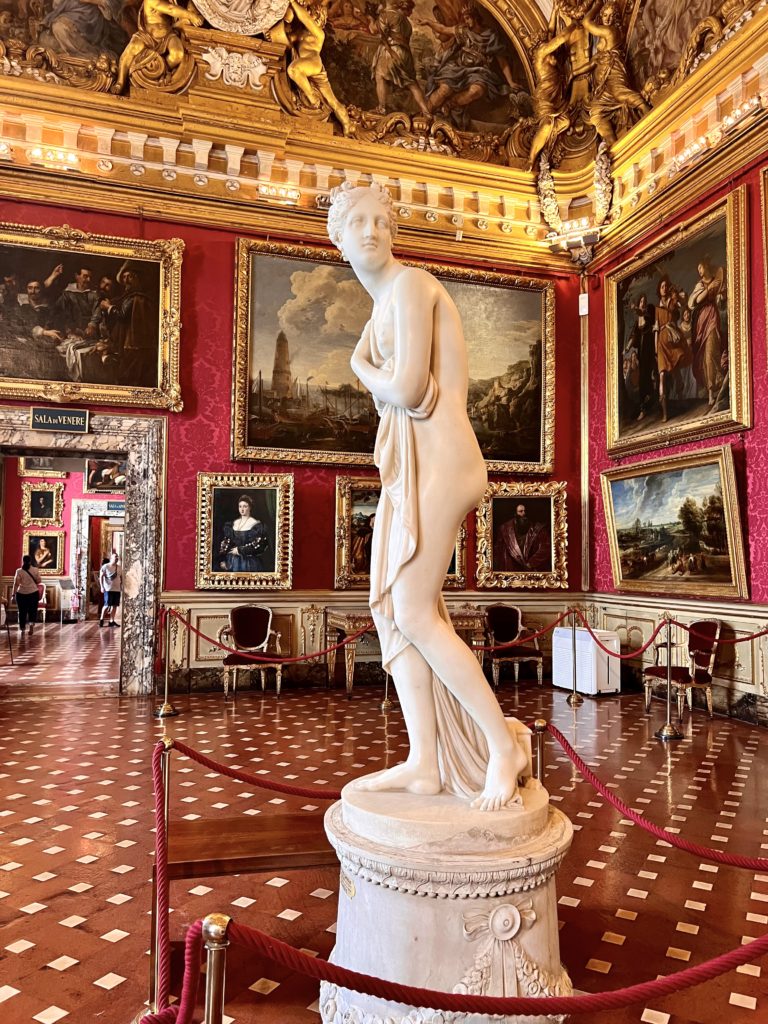
I hope you’ve enjoyed my guide to the Medici Palaces in Florence. If you’re planning a trip to Florence, you may enjoy these other Florence travel guides:
- 1 Day itinerary for Florence
- 2 Day Itinerary for Florence
- 3 Day Itinerary for Florence
- Hidden Gems in Florence
- Best Museums in Florence
- Florence Art Bucket List
- Best Day Trips From Florence
- Free Things To Do In Florence
- Guide to the Medici Palaces
- Who Were the Medici?
- 10 Day Itinerary for Tuscany
- Guide to the Uffizi Gallery
If you’d like to visit the Medici Palaces in Florence Italy, pin it for later.

